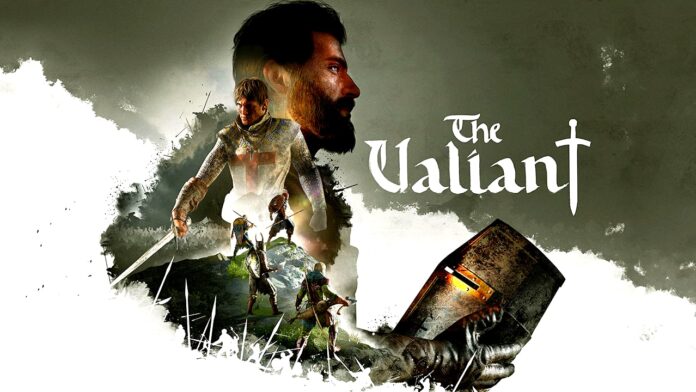Cool heroes, hot close combat and a fat solo campaign: In the real-time strategy game The Valiant, you lead a personal crusade through medieval Europe. We have exclusive information!
A war veteran who never wanted to fight again takes up arms one last time – and unleashes a personal crusade against his crazy ex-comrade. Sounds like an action film with Liam Neeson, but it is a real-time strategy game, and we meant the crusade quite literally: The Valiant is set in 13th-century Europe, in the middle of dense through-traffic towards the Orient.
We were allowed to take a first look at the new real-time strategy from Kite Games. Find out what you can expect in The Valiant in our exclusive preview. But first take a look at the trailer, because it’s guaranteed to whet your appetite for more:
Table of Contents
Indiana Jones and the Next Crusade
Actually, ex-crusader Theoderich von Akenburg has sworn off violence, but his former brother-in-arms Ulrich is completely obsessed with a legendary artefact, namely the “Staff of Aaron”. It is supposed to be very powerful, but if used improperly it can plunge humanity into the abyss. Bad for Ulrich: the staff is broken into several pieces.
Good for us: the race for the artefact puzzle pieces takes us right across medieval Europe to the Promised Land. So it’s like Indiana Jones and his adversary Dr. René Belloq!
Even before the announcement of The Valiant (“The Brave One”), we received exclusive video material with in-game game scenes, which we analysed for this preview. In addition, we were able to talk in detail, also exclusively, with Producer Brad Logston about the RTS.
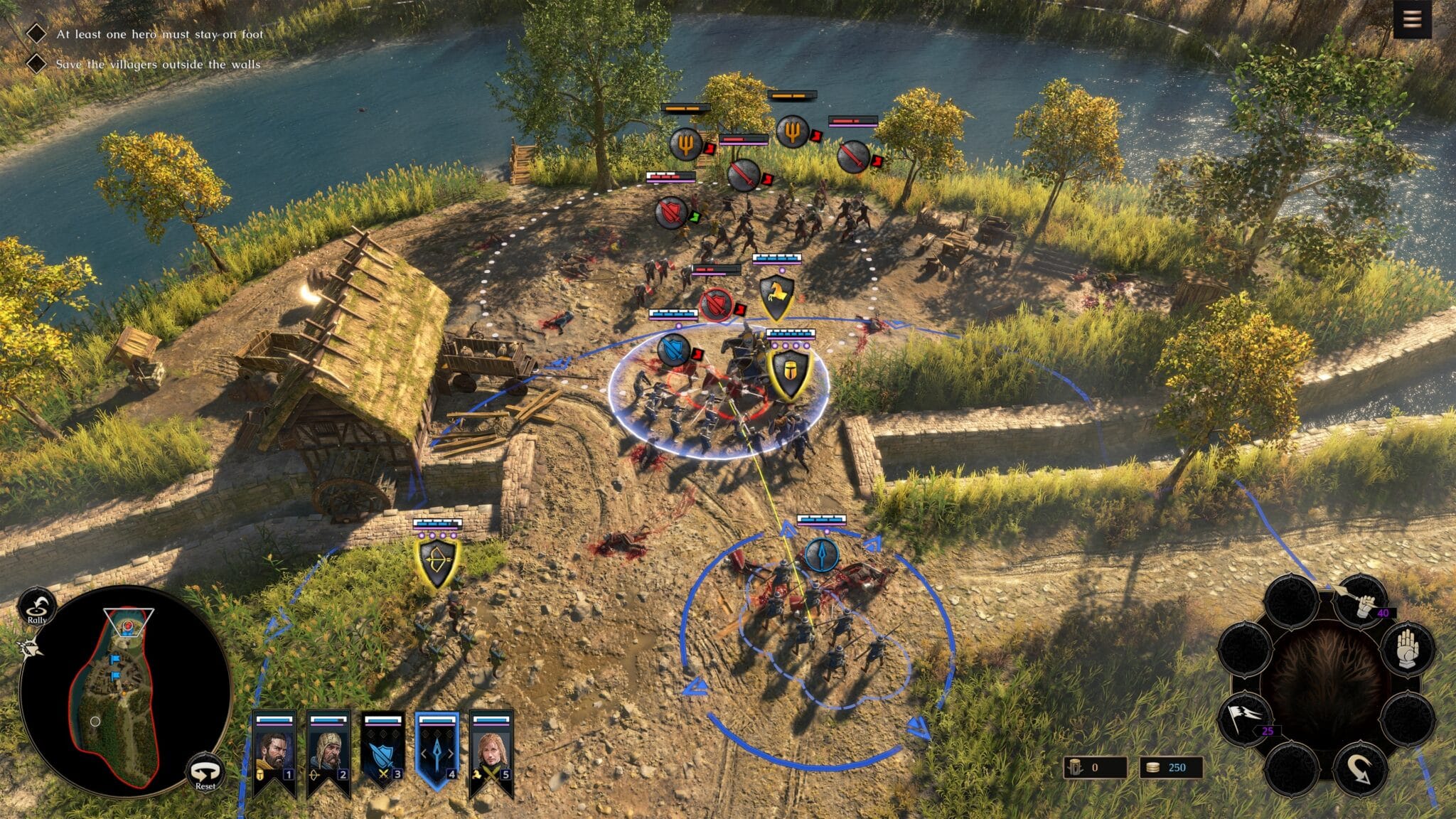
The US-American is a specialist for strategy games, he was in charge of the successful tactical role-playing game Expeditions: Rome and is currently also working on Knights of Honor 2 and Jagged Alliance 3.
The focus of The Valiant is on three areas. First: a large, elaborately staged solo campaign. Secondly: tactical battles with very few, but specialised units – first and foremost Theoderich and his companion heroes, which you skill and thus specialise further and further. Warhammer 40K: Dawn of War 2 beckons casually over here!
And as a third focus, there is a lot of melee combat with swords, axes, spears, shields and whatever else you can use for slashing and stabbing. Bows, crossbows, catapults and trebuchets are also used, but the clinch is mostly man against man. And now let’s take a closer look at the three pillars.
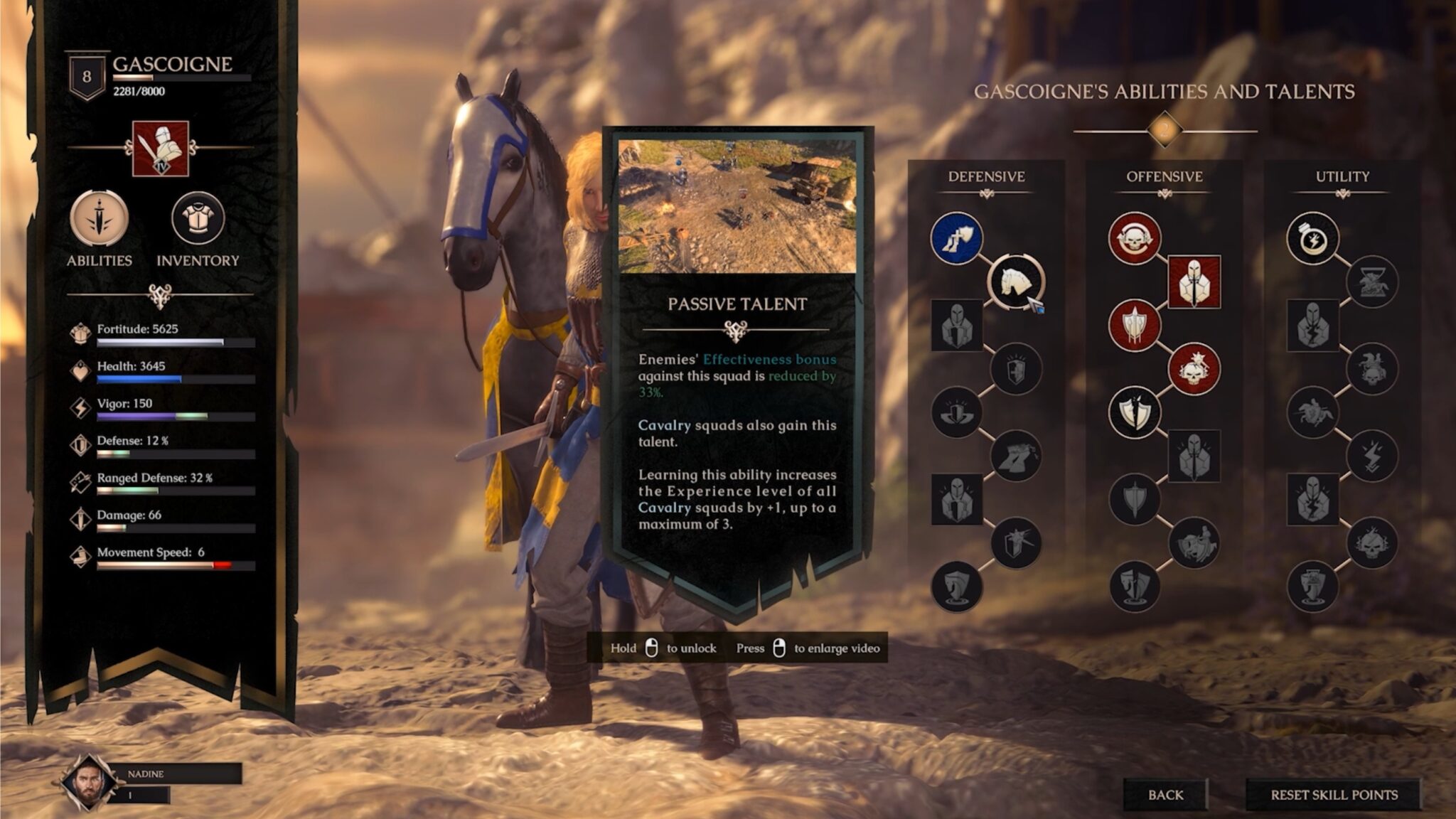
The solo campaign: history to tackle
The solo campaign is expected to include 16 missions. Your private crusade begins in today then part of the Holy Roman Empire. You cross the Alps, fight at Venice and then further south down the Italian boot.
From here, you finally head east via Constantinople to the Promised Land. The game does not slavishly adhere to real world history, but you will meet historical figures from time to time.
Before a new scenario, you can often decide who to take with you on the mission. Theoderich and his hero buddies grow with you, so to speak, reach higher levels and always keep their chosen skills and equipment. Despite these role-playing elements, the focus will remain on real-time strategy.
Brad Logston promises a lot of variety in the missions: You don’t fight your way stubbornly through Ulrich’s troops or local enemies, but experience sneak missions, rescue operations, ambushes, defensive battles and so on, sometimes combined in a single mission. “The player learns and experiences something new in every mission, no two will be the same,” the producer emphasises.
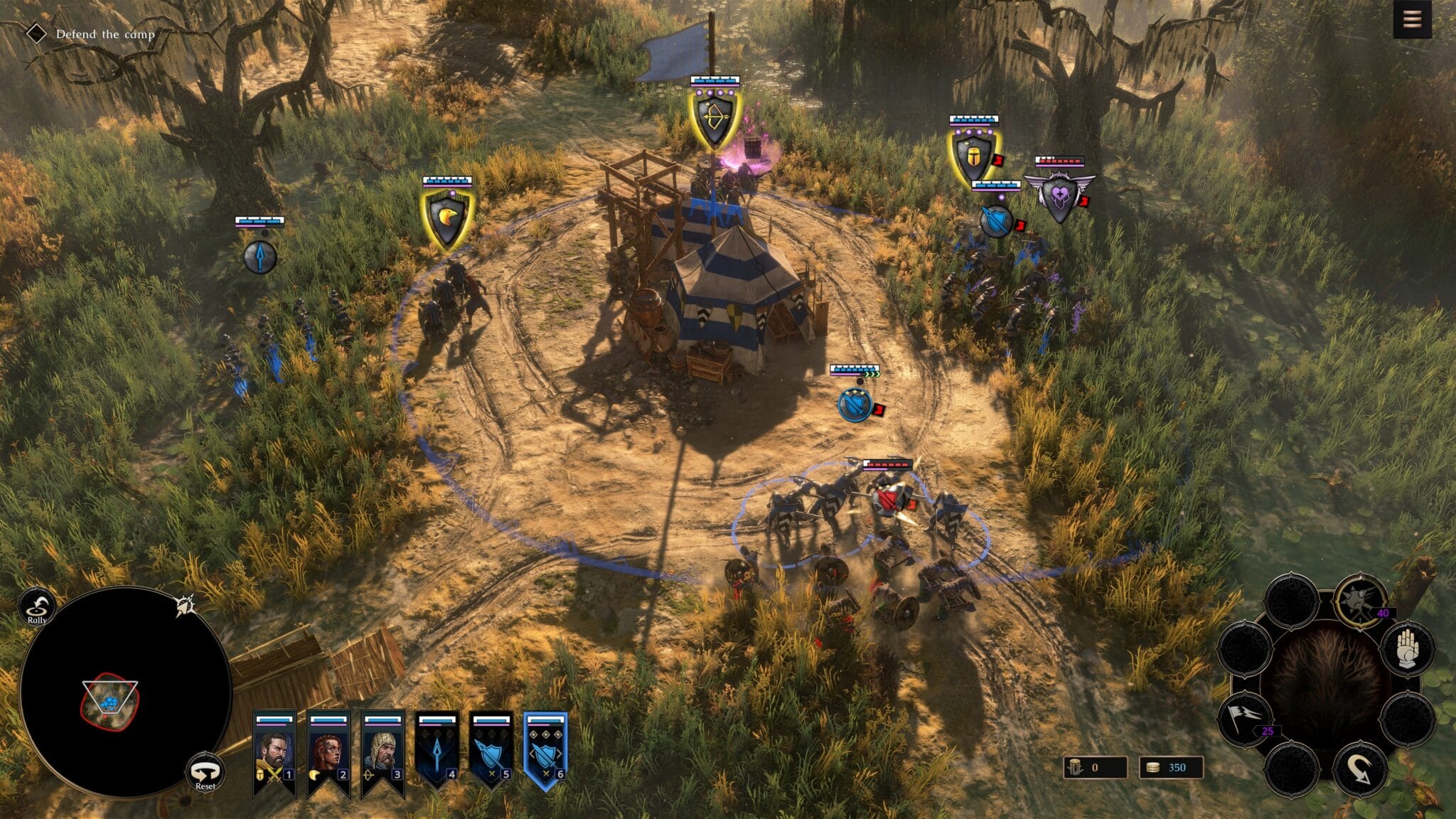
The heroes and units: less = more
You play the missions with very few squads. Usually there are only four to seven, in larger battles sometimes eight or nine, that’s it. The focus is always on your heroes – apart from boss Theoderich, for example, cavalryman Gascoigne, the wild mercenary Grimhild, archer Konrad and the grumpy order knight Reinhard von Kempten. Each brings a three-part skill tree that also influences their respective troop types.
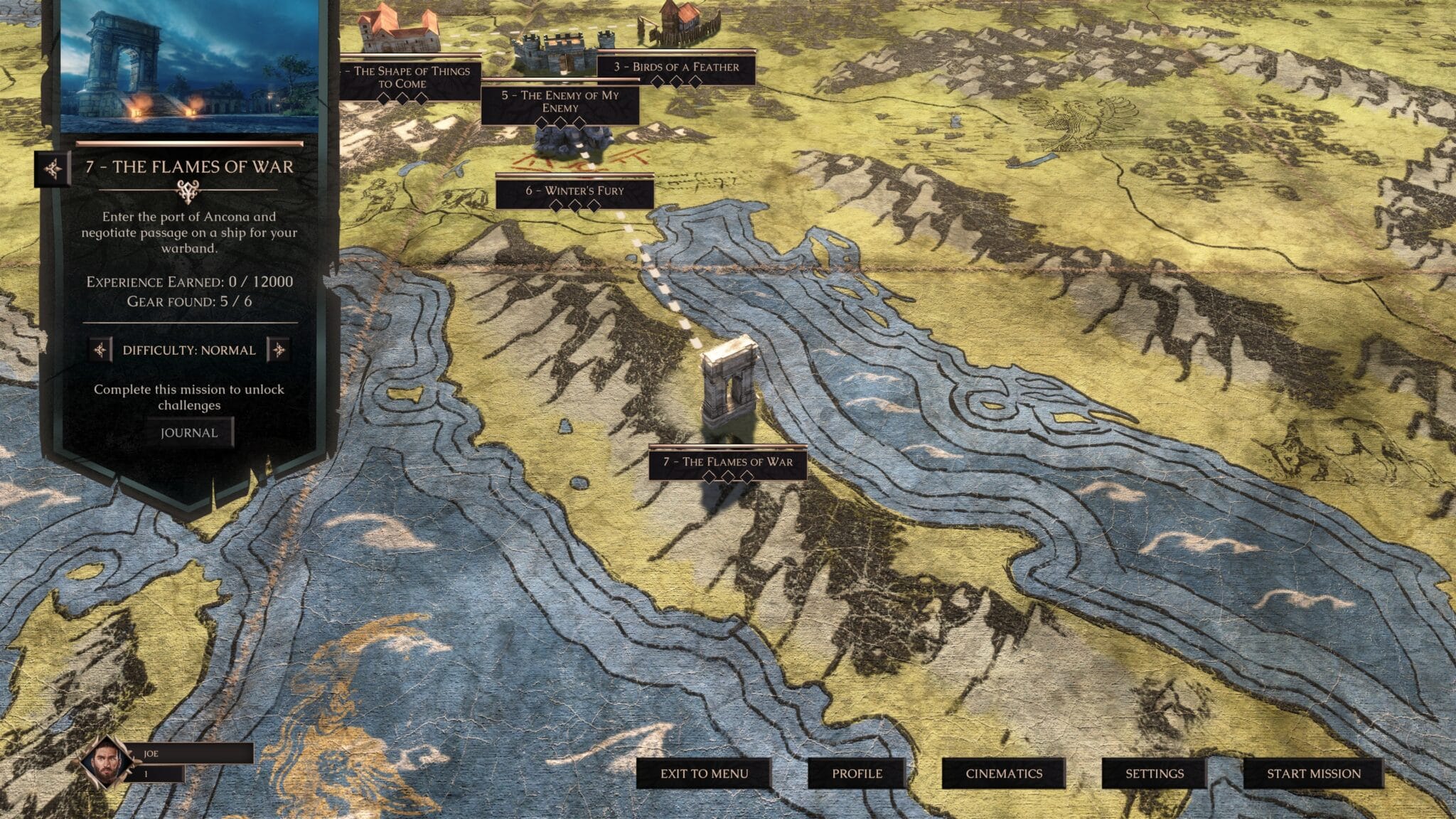
For example, if you give the mounted Gascoigne more power in assault attacks, the normal cavalry will plough through enemy lines more efficiently. Grimhild’s courage skill draws the wrath of the enemy upon her, but also spurs on nearby infantry. And archer Konrad, for example, can choose between bow and crossbow – i.e. more range or more bang.
In combat, every marching hero has a “Vengeance Meter” fitted as standard. This is a golden frame around the hero’s crest icon that fills up when you deal or take damage. When the “Vengeance Meter” is full, the crest icon lights up strongly and new commands pop up in the hero’s circle menu, such as a paralysing volley of arrows for archer Konrad.
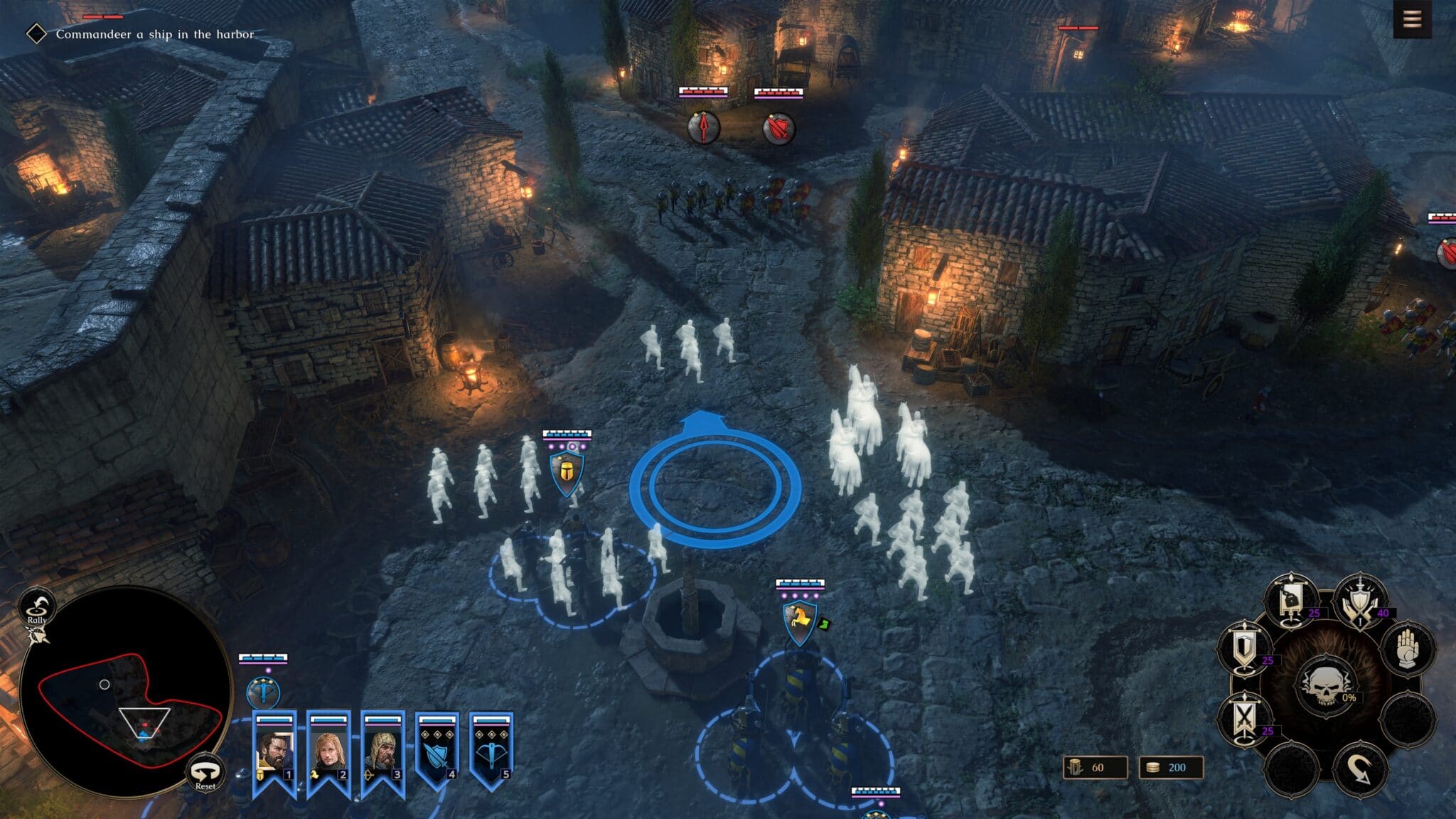
Now you have two options: Trigger the desired skill immediately or leave the Vengeance Meter filled for the time being to hold passive bonuses and strike later.
By the way, there is also a little bit of magic in the game: units don’t cast wild spells, but rumour has it that the puzzle pieces from the Staff of Aaron have magical powers, sort of like the Ark of the Covenant in the finale of Raiders of the Lost Ark. Producer Brad Logston didn’t want to reveal more yet.
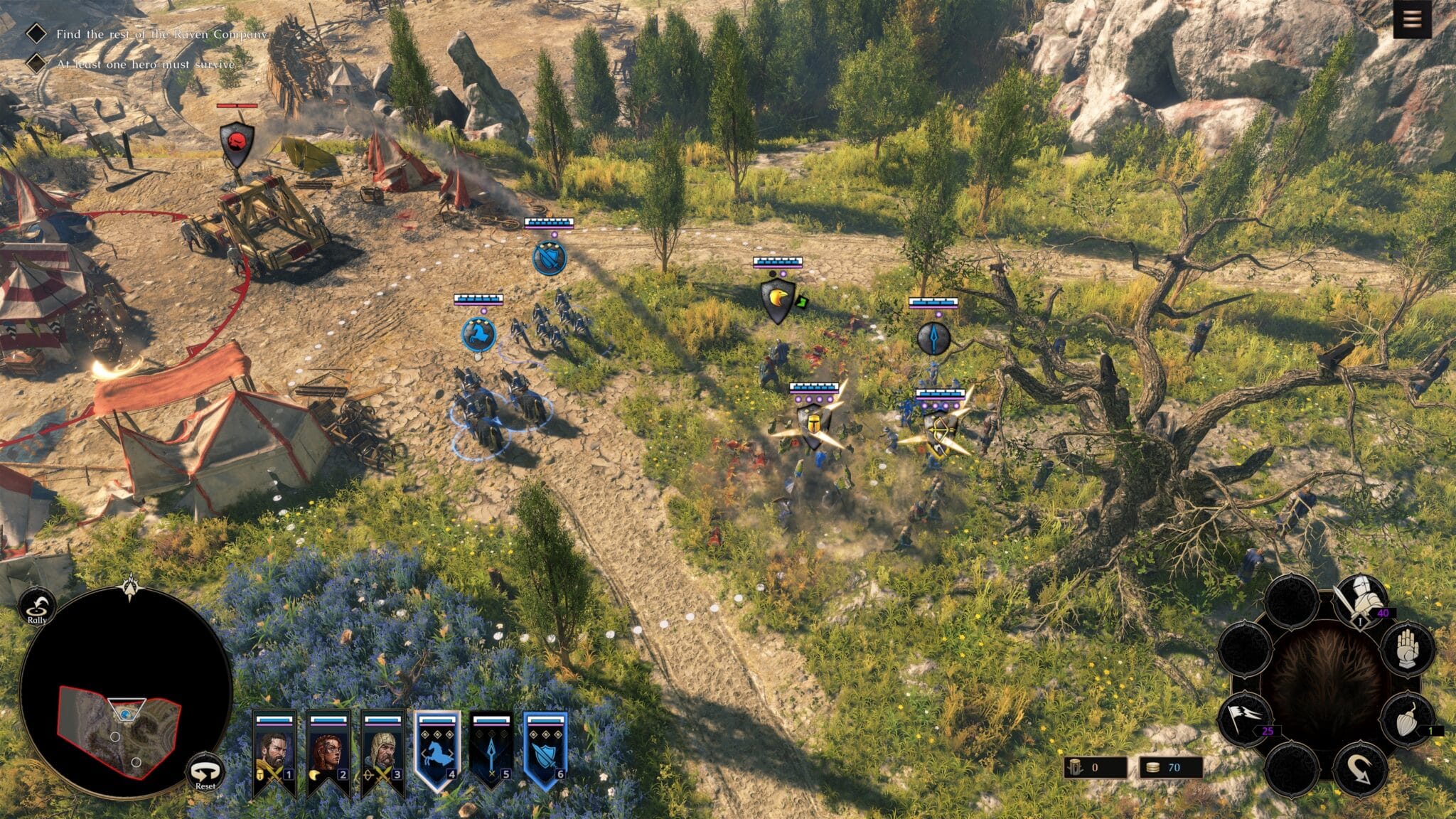
The battles: get to the enemy!
Because you play your missions with only a few units, your heroes and their accompanying troops are decisive for the battle; you have to use their strengths and abilities tactically. At the same time, the rock-paper-scissors principle plays a major role. Simple example: When Theoderich’s squad is ambushed, an enemy cavalry squad wants to charge Konrad and his archers – this is announced by a large yellow arrow.
If you are quick enough now, you can pull the archers out of the danger area and counter with spearmen, because they are known to be good against cavalry, which promptly retreats in pique. The unemployed spearmen now ignite a special kill, hurl their weapons at enemy swordsmen and literally nail them. Already the ambush has failed, we can pursue the attackers or march on in formation.
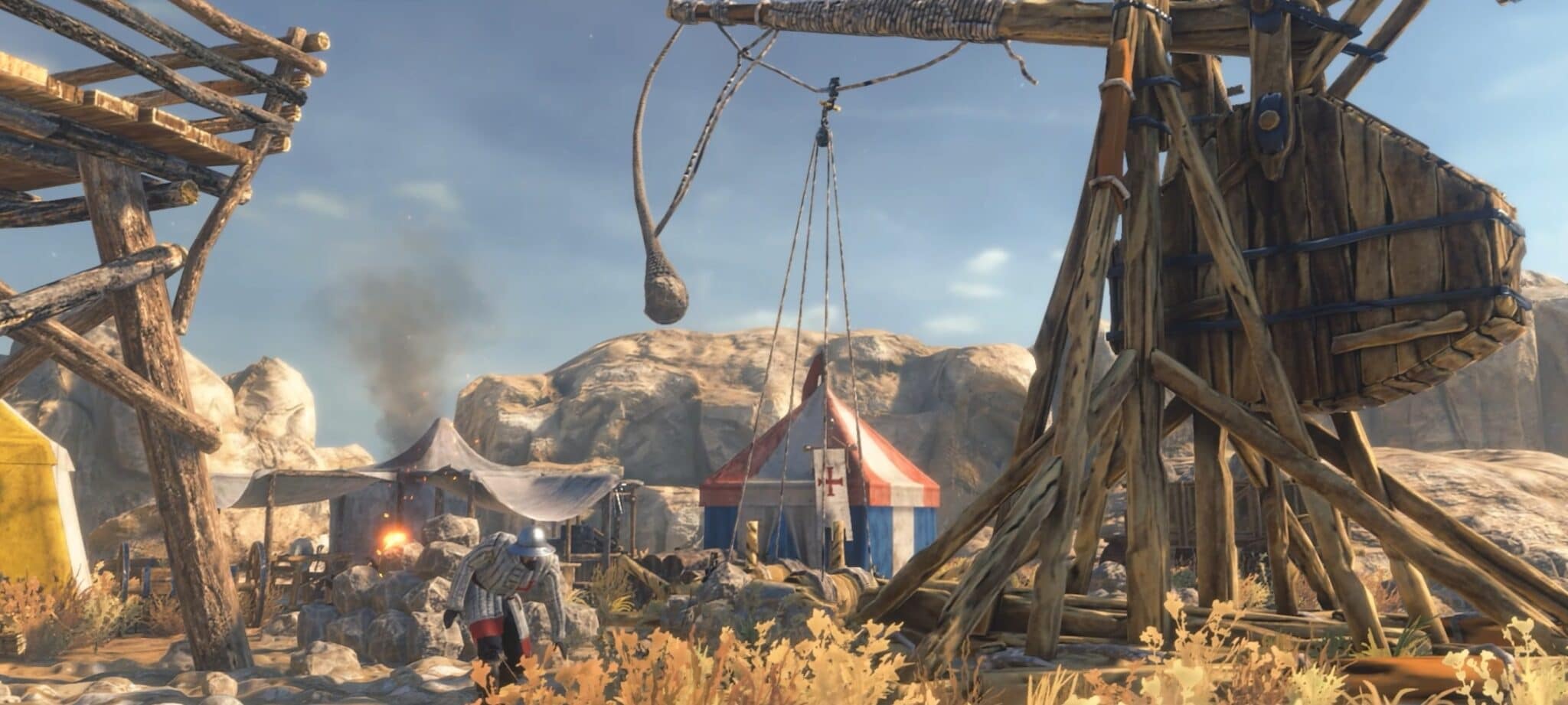
The reason you have to be so tactical in battles is that losses are difficult or impossible to replace, as The Valiant does not use base building at all. So you don’t build barracks, but at most Obi constructions like wooden platforms so that your archers can keep looking and shooting in defensive positions.
In siege battles you build your own war machines or capture or destroy enemy ones. You can usually get reinforcements through liberation actions or by capturing certain sectors. However, such strategic positions are rather the exception, The Valiant will not be a Company of Heroes.
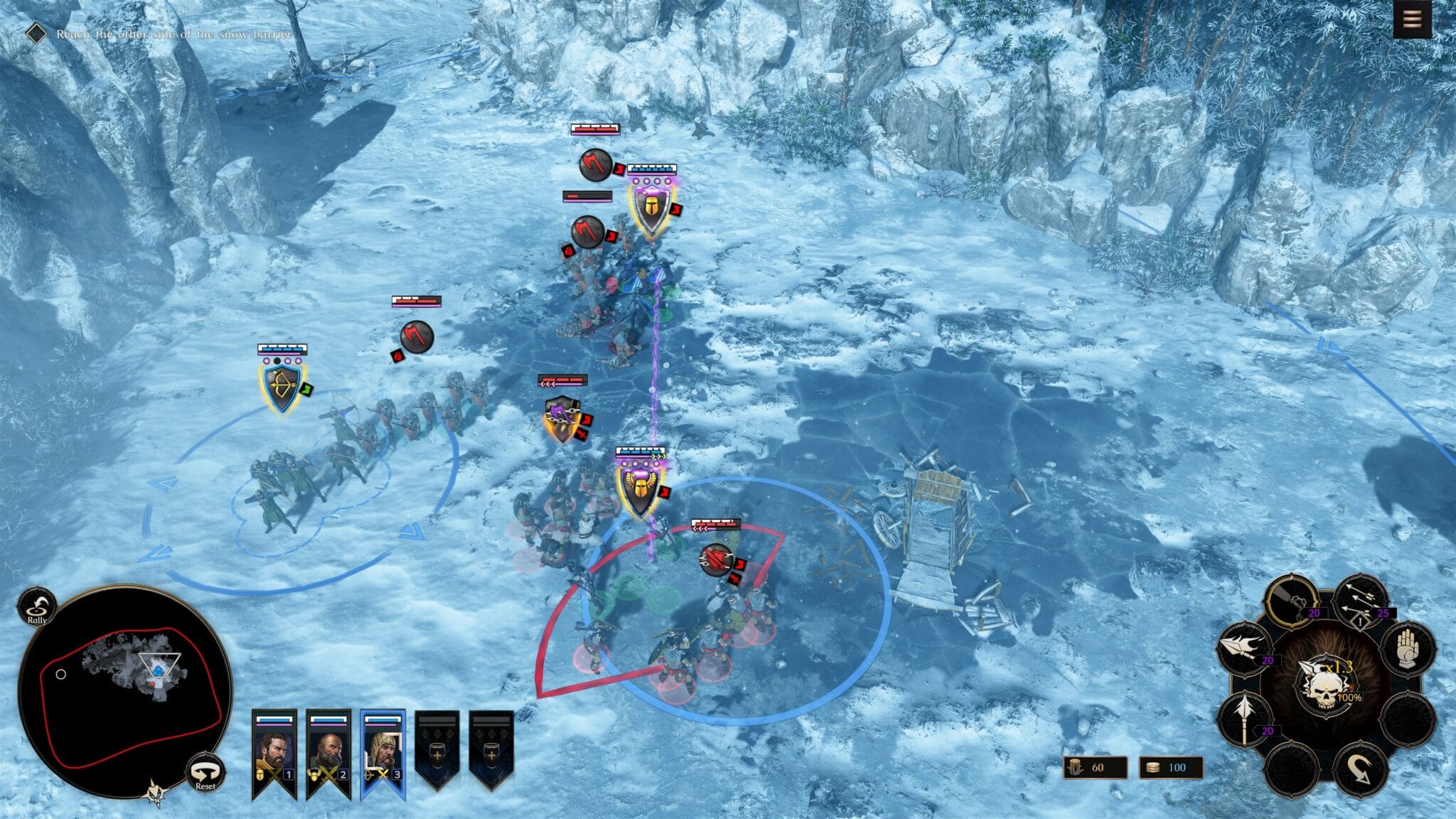
And what about multiplayer?
In addition to the 16-part solo campaign, two multiplayer modes are planned, namely versus and cooperative. In PvE, up to three players fight off attacking AI troops together. The attack waves get stronger and stronger, mini-bosses and real bosses intervene.
Depending on how long you survive in this Last Man Standing, you collect experience points for your heroes, level them up and unlock more skills. In addition, cosmetic outfits are planned for your warriors, with which you can show off.
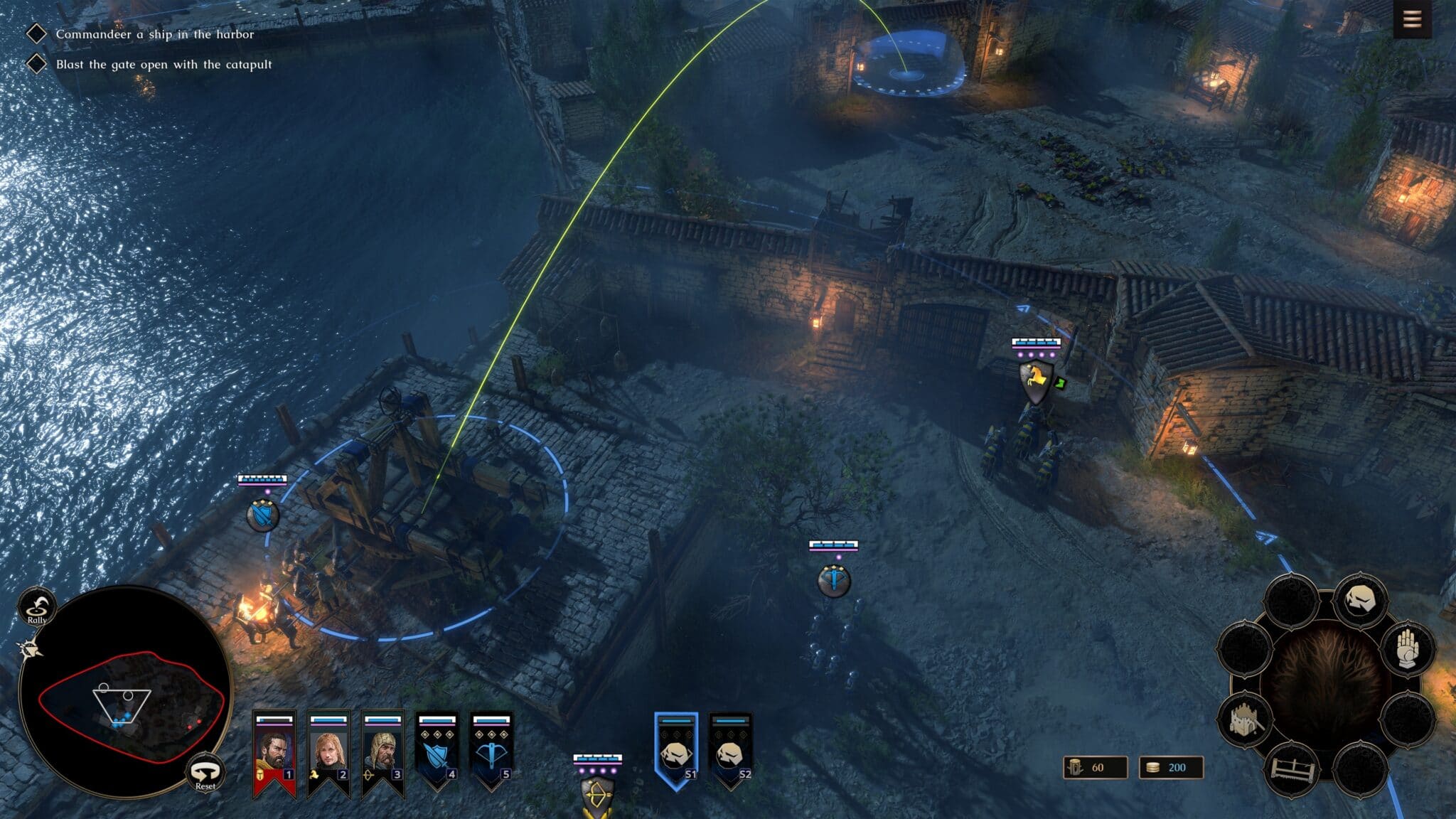
In PvP there will be scenarios for one against one and two against two players. Here, it is often a matter of conquering and holding sectors in order to strengthen your troops or secure terrain advantages such as hills or bottlenecks. But also in PvP there are no mass battles, but tactical battles with a few battle groups, just like in the solo campaign.
Editor’s Verdict
For over an hour instead of the planned half, I chatted and talked shop with Producer Brad Logston via Discord – and was tempted several times to give him a virtual hug. Because I think his strategy behind the strategy game is spot on: focus on a classic solo campaign, tactical battles instead of cannon fodder battles, and hopefully successful, dynamic close combat!
The team at Kite Games also makes me confident. The Hungarians have already shown in 2017 with Sudden Strike 4 that they are not only capable of half-baked games, but even good ones. The World War RTS didn’t have much to do with the original, mass battle-focused first Sudden Strike from 2000, but the battles with few but specialised tanks, guns and infantry were exciting and well staged.
Since I have not yet been able to play The Valiant myself, I am still cautious about making a more accurate assessment. The decisive factor will be how well the close combat works. You probably know this problem from many real-time strategy games: When marching, taking up positions and charging, units are still well in formation – but when they come into direct contact with the enemy, everything tends to clump together, the mess becomes static and it is often difficult to intervene.
In any case, the in-game game scenes make a good first impression. I’m looking forward to it!

